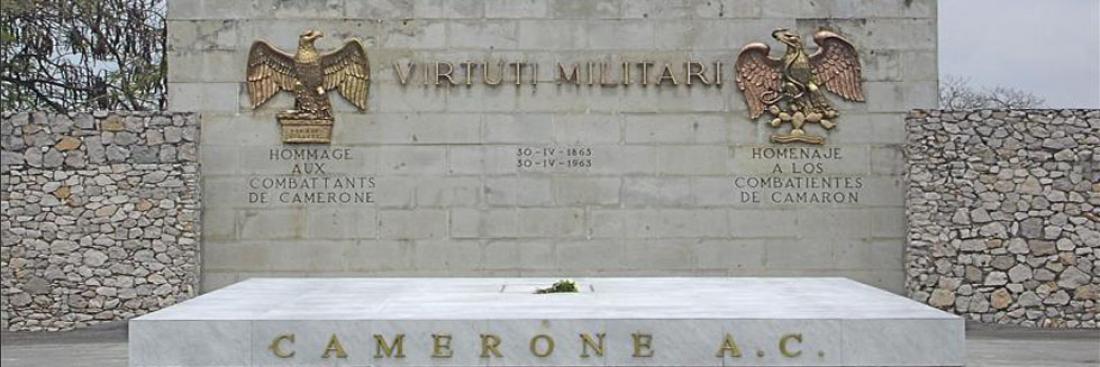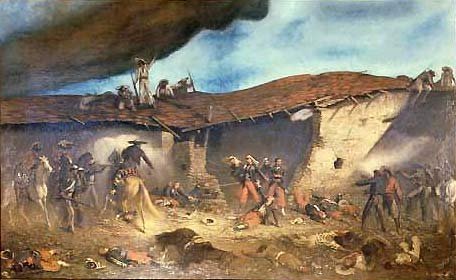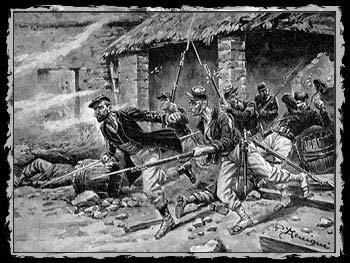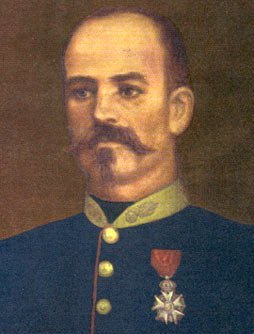At midday, Captain Danjou was killed by a shot to the chest. Sub-lieutenant Vilain took over but died two hours later after falling during an assault. At this point, the Mexican colonel managed to set fire to the inn.
The legionnaires persevered; many of them were killed until, after five hours, only 12 men remained standing under Sub-lieutenant Maudet.
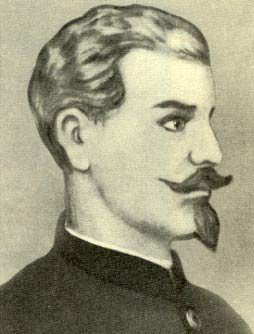
Sublieutenant Maudet. Source: www.legionetrangere.fr
The Mexican Army launched a final general assault through the gaps they successfully opened, but before that, Colonel Milan addressed a last warning to Sub-lieutenant.
At the end of battle only six men had survived: Sub-lieutenant Maudet, Corporal Maine and legionnaires Katau, Wensel, Constantin and Léonhart. Each of the men still had a bullet and, in a corner of the courtyard, they faced the enemy. Sub-lieutenant Maudet and two legionnaires fell to their death; Maine and his two comrades were massacred when a Mexican officer rushed to protect and save them crying: ”Surrender!” ”We will surrender if you promise to tend to our wounded and if you allow us to keep our arms.” They continued to stand with their bayonets raised. ”What can I refuse to such men?” replied the officer.
Captain Danjou's 60 men managed to kill 300 Mexican soldiers and wounded the same number of men.
Reconnaissance
Emperor Napoleon III decided that the name Camarón would be printed on the Foreign Legion's flag and that the names Danjou, Vilain and Maudet would be engraved in gold on the walls of the Invalides in Paris.
A monument was erected in 1892 on the battleground. It bears the inscription: Here there were less than sixty men fighting against an entire army. Its numbers crushed the, Life rather than courage abandoned these French soldiers on April 30, 1863. In their memory, the motherland has erected this monument.
On 30 April every year, the Foreign Legion commemorates the Battle of Camarén on its anniversary as part of its traditional celebrations during which the account of Camarón is read out to the troops in each unit of the Legion, wherever it is and whatever the circumstances. On this occasion, a legionnaire carries a wooden hand on a cushion. It ascends the sacred way that leads to the monument to the dead transported piece by piece from Sidi-bel-Abbès.
Captain Danjou's hand
After the combat, Colonel Jeanningros' rescue party found nothing but dead bodies. They looked in vain for Captain Danjou's articulated hand that 10 years earlier he had had made in Algeria following a fire arms accident. The prosthesis was found on 20 July 1865 by an Austrian lieutenant at the ranch owned by a Frenchman in the area around Tesuitlan, which he bought for 50 piastres. It is currently on display at the Museum of Aubergine.
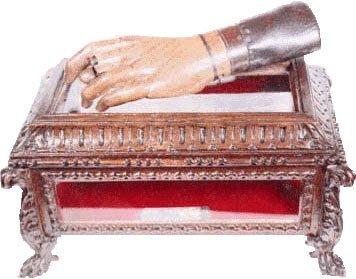
Captain Danjou's wooden hand. Source: Musée du Souvenir de la Légion étrangère (Foreign Legion Remembrance Museum).
External website: Légion étrangère.
